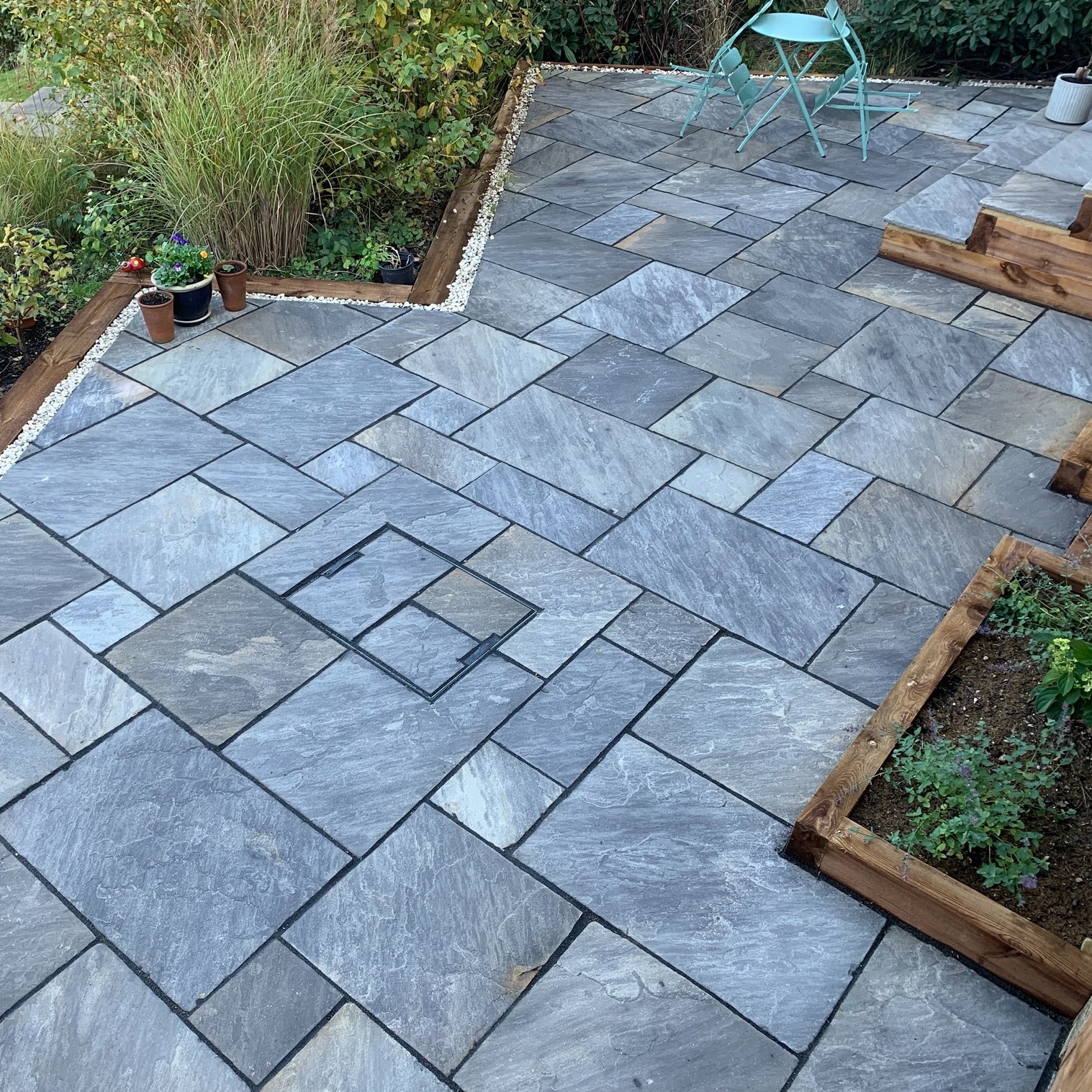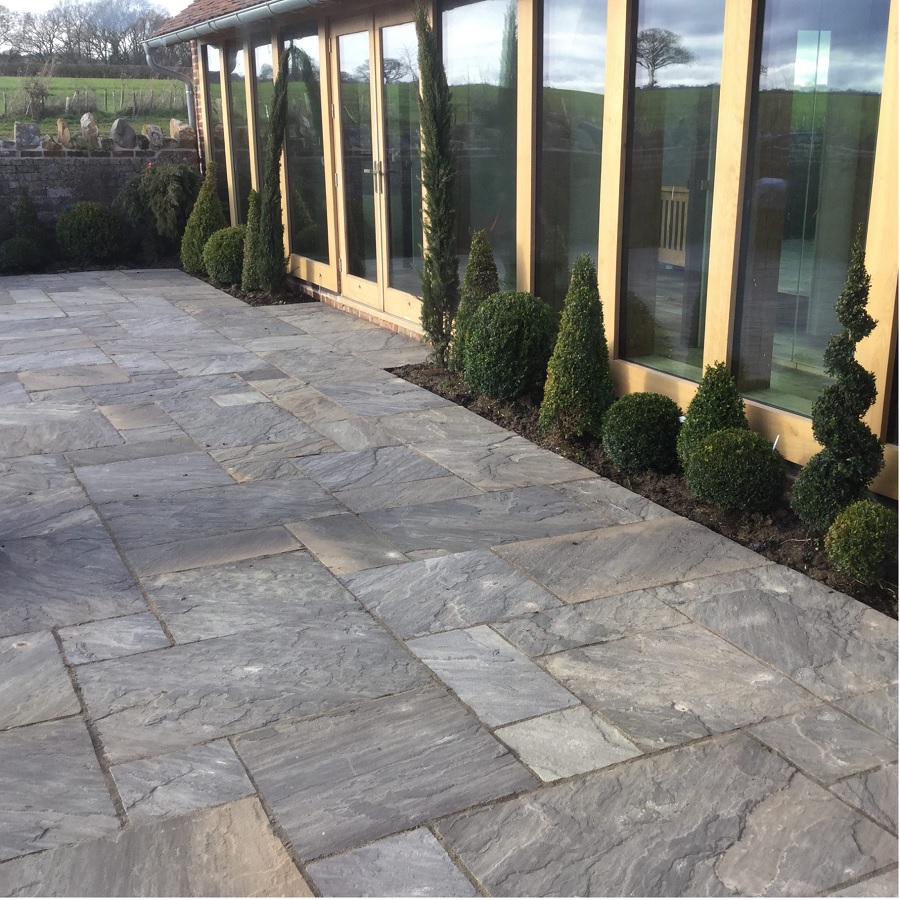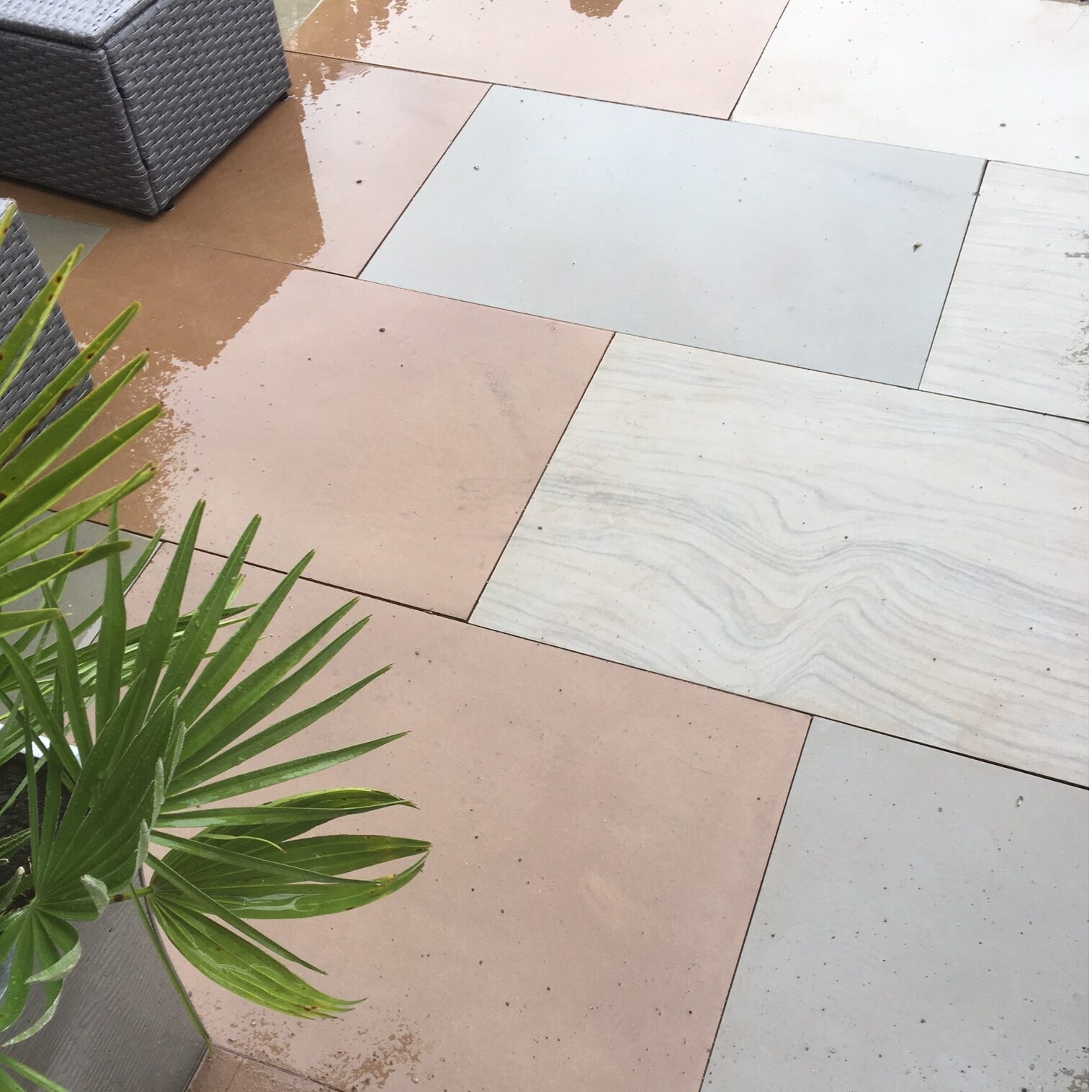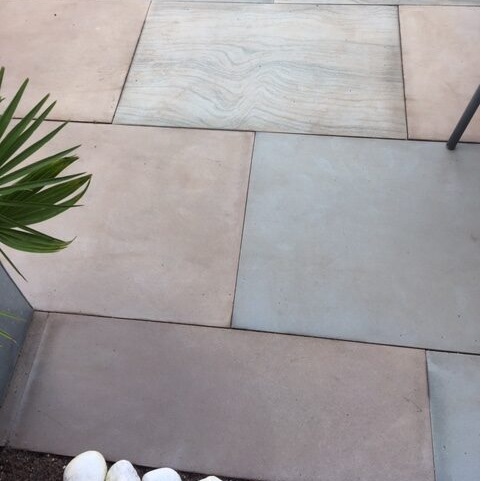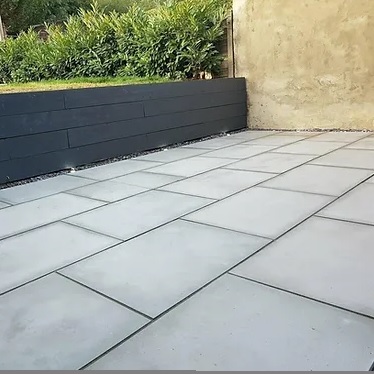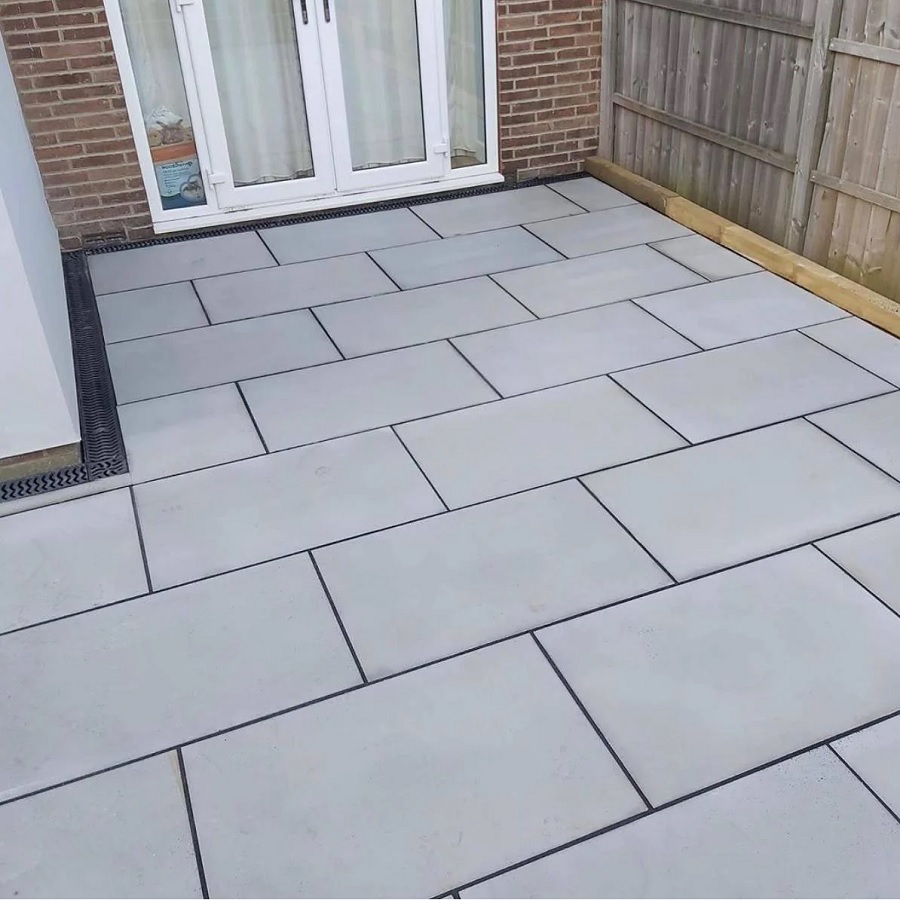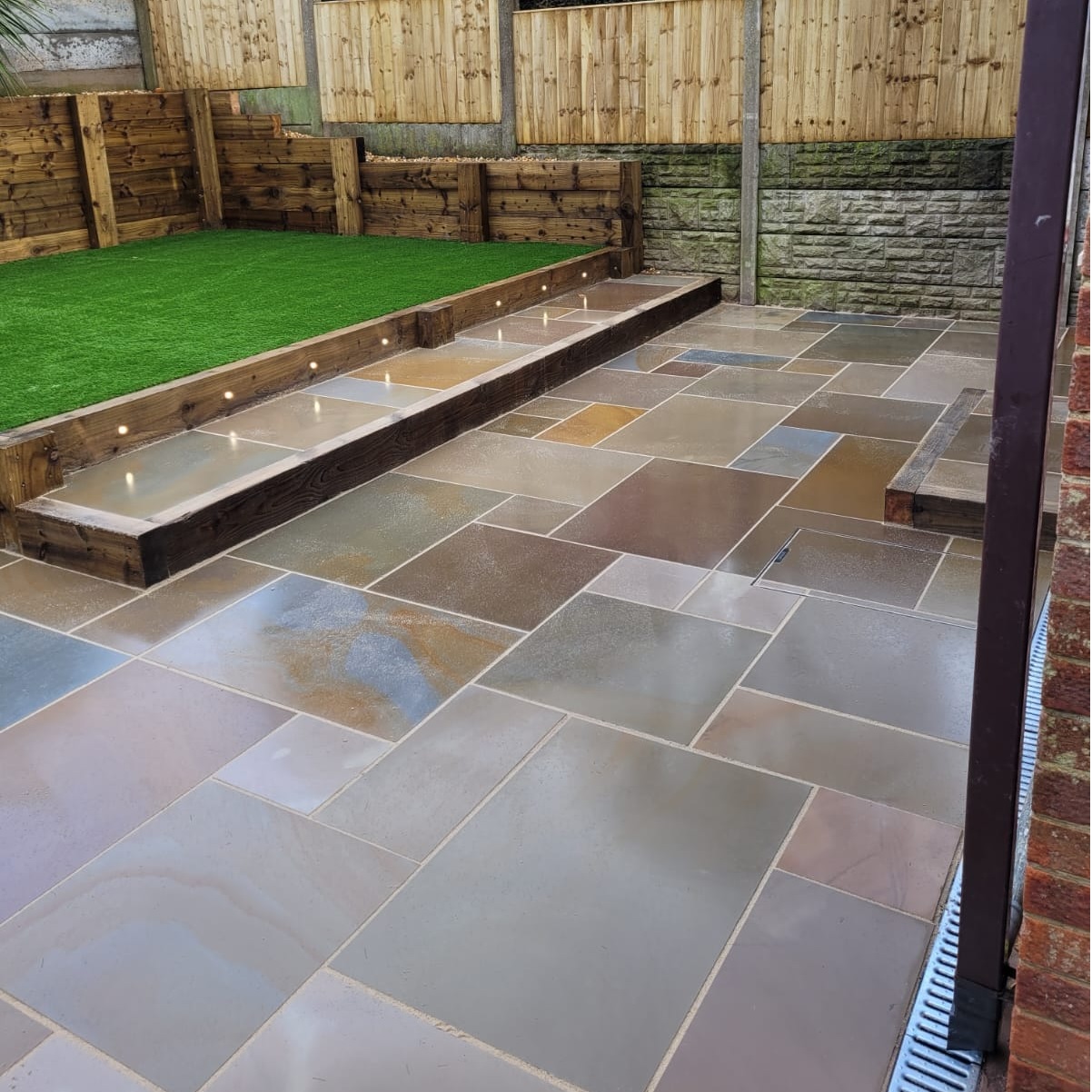Introduction to Indian Sandstone Slabs
Found in around the globe, sandstone is particularly prevalent in regions like India, Europe, and Australia. Indian sandstone paving serves as a fantastic option for designing patios, pathways, and garden features. Its inherent beauty and affordability make it a popular choice for outdoor spaces in both homes and businesses.
Our collection of Indian sandstone flags features an array of colours, sizes, and textures to cater to your unique style and design preferences.
Benefits of Indian Sandstone
Sandstone is a natural stone that can withstand harsh weather conditions, heavy rain, frost, and high foot traffic. It's also easier to work with than granite.
Sandstone comes in a wide range of colours, textures and finishes, including solid and multi-toned colour variations, allowing you to select the sandstone that suits your specific design requirements.
Sandstone is generally more affordable than other types of stone flooring, especially Indian Sandstone.
Sandstone is relatively low maintenance, with maintenance only required once or twice a year to help maintain the durability of the stone and its overall appearance – using specialised sandstone sealing products.
Types of Indian Sandstone
Sandstone is available in a variety of different colours and textures, we provide popular sandstone paving products including: including Kandla Grey, Autumn Brown, Fossil Mint, Raj Green, Sagar Black, Rippon Buff, Mint Ivory and Rainbow Sandstone each with their own unique characteristics, colours and textures.
Indian Sandstone Applications
A garden serves as a wonderful retreat to enjoy nature and promote well-being. However, walking directly on the grass can be detrimental. To preserve its beauty, consider incorporating stepping stones, patios, and pathways throughout the garden and using sandstone for this use adds a touch of nature for a more traditional garden appearance.
- External Paving
- Patios
- Garden Paths
- Driveways
- Stepping Stones
Patios & Garden Paths
Indian Sandstone is an extremely hard-wearing and visually appealing stone material, making it perfect for a patio or walkway as it can withstand heavy foot traffic and further creates a more natural eye-catching space for visiting guests. In addition, its natural anti-slip natural properties due to the riven textures, make it ideal for winter weather conditions.
Comparison with Other Paving Materials
When it comes to enhancing your outdoor environment, picking the right paving material is crucial, with porcelain and sandstone being among the most favoured choices. Both materials offer distinct benefits and limitations, making the selection process somewhat tricky. Let’s delve into the main considerations to assist you in making a well-informed decision.
Cost
Sandstone often takes the lead in terms of cost, providing an affordable choice that delivers a charming, rustic aesthetic without breaking the bank. In contrast, porcelain usually comes with a heftier price tag, attributed to its production methods and robust nature. Nevertheless, the long-term maintenance savings associated with porcelain can make it a worthwhile investment over time.
Durability
Porcelain takes the crown for durability, showcasing impressive resistance to scratches, stains, and harsh weather, which makes it an excellent option for areas with heavy foot traffic and challenging climates. Sandstone, while also durable, tends to weather, erode, and crack more easily if not properly sealed. Limestone sits in between, offering solid durability but being softer and more prone to scratches than its porcelain counterpart.
Maintenance
Porcelain is incredibly low maintenance, as it resists moss, mold, and stains effectively. A simple occasional cleaning is sufficient to maintain its fresh appearance. In contrast, sandstone requires more care; it typically needs regular sealing to guard against stains and moisture, and it’s prone to algae or moss growth in humid environments. Limestone, too, demands consistent sealing and can be trickier to clean due to its tendency to stain.
Maintenance Tips
To preserve the natural beauty of sandstone and shield it from environmental elements, stains, and fading, it's essential to apply a sealant every year, recommended just before the winter months. Further, sealing can slow down or halt the deterioration of the stone so that it looks newer for longer.
FAQs (Frequently Asked Questions)
Is Indian sandstone suitable for driveways?
Yes, Indian sandstone is an excellent choice for driveways due to its strength, durability, and slip-resistant surface.
What is the difference between sandstone and Indian sandstone paving?
Compared to other types of sandstone, Indian sandstone is a much more affordable option which works in its favor if you are creating a sizable driveway, or a patio feature.
What are the disadvantages of Indian sandstone?
Without sealing Indian sandstone can start to look worse for wear after a few years and will require increased maintenance to keep it looking at its best.
















